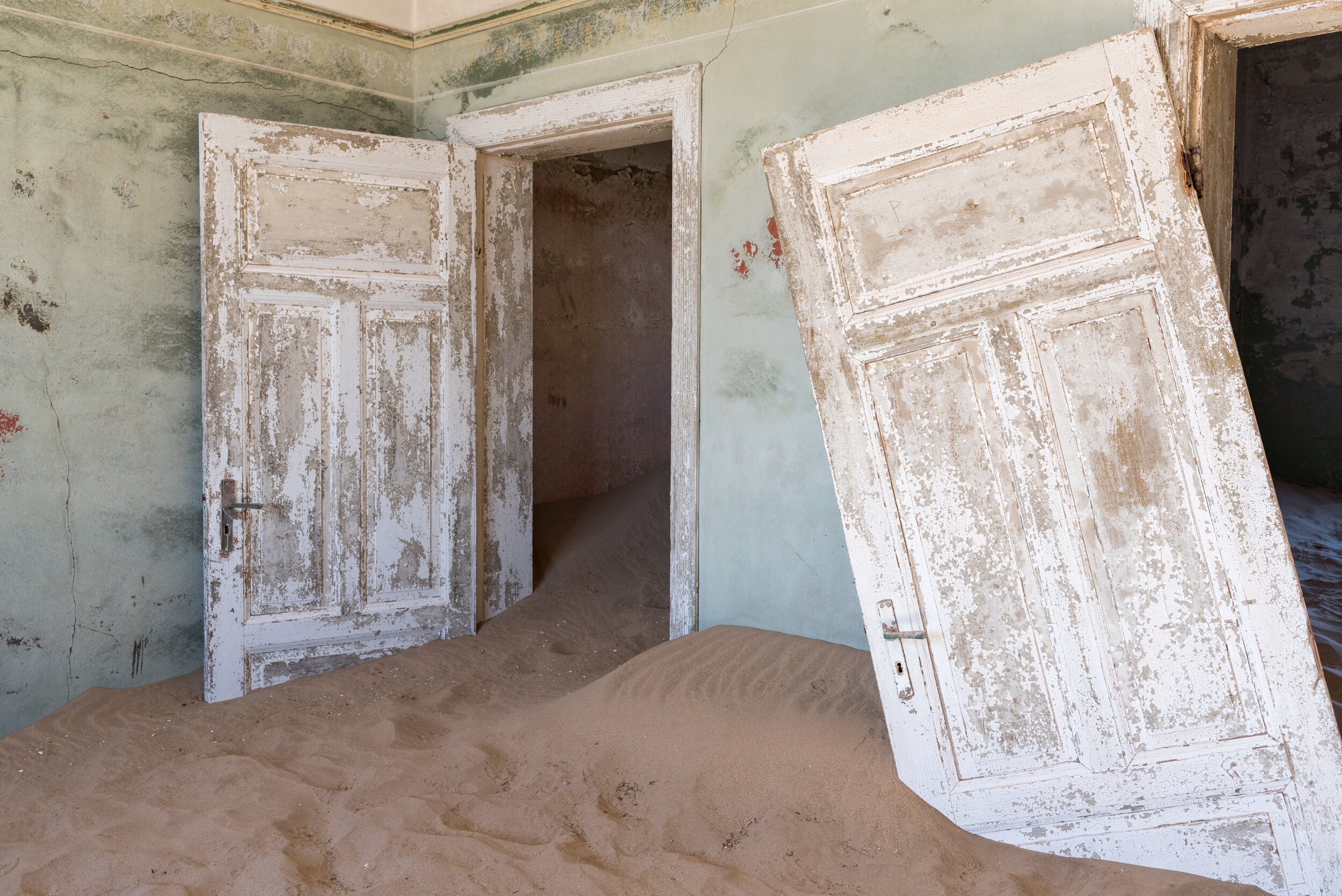As if the gravel roads of Namibia weren’t adventurous enough, there’s a nice, endearing name for the long strip of land that runs into the Atlantic Ocean along Namibia’s western shores: The Skeleton Coast.
Skull and Crossbones mark the entry and exit gates of the Skeleton Coast National Park, a wasteland of shipwrecks, whale bones, and mountainous sand dunes. A kaleidoscope of colors intermixes with the all-encompassing yellow sands. Blacks turn to reds turn to whites turn to goldens turn to pinks. Minerals brought up with the currents deposited themselves along the coast over the millions of years to form the eerie spectacle racing past our windows as we drove across the hardened salt roads. Stopping for panoramas, abandoned oil rigs, shipwrecks, and an enormous (and smelly) seal colony, the harsh winds from off shore had us running back into the car for shelter.
While the national park is technically only a couple-hundred kilometer stretch in the north, nearly the entirety of Namibia’s coastline can be considered to be a Skeleton Coast of sorts, as the dunes and shipwrecks continue for miles and miles past the park gates. The most spectacular coastline centers around Sandwich Harbor, where giant dunes drop straight off into the ocean below. Though we did have our own vehicle, we opted for a 4WD tour of Sandwich Harbor, from the nearby town (city by Namibian standards) of Swakopmund, a German-influenced town with cafes, eateries, beaches, and adventure activities galore. While paragliding, sand-boarding, and ATVing were on the menu, getting to Sandwich Harbor was plenty of adventure, even from the comforts of a land cruiser. The tides allow for short windows of passable sand crossing to make your way into and out of the harbor, where giant dunes sloping straight in the ocean await. We made our way along the bottom, to the top, and all around the massive sand mountains, completely engulfed by dunes in every direction, save for the summit views of blinding sand and crashing waves along the shoreline below. Like an hours-long roller coaster, we slowly climbed up, just to crest and drop, what seemed like vertically, down. Breaking for a dune-top lunch with a view and some foot-races down the ever-changing mountains, we couldn’t have asked for a better day. Being Africa, we also got the added bonus of spotting some wildlife in the sand, including springbok and a clear-skinned gecko of some sort.
Back on the road, we continued south through more of the world’s oldest desert, more wildlife, more dunes, and more odd crystal stalls. Namibia has this sort of aura of endearing desolation. Many small villages seem to be completely abandoned, until you see one person walking alone a couple kilometers away, and you wonder how the heck he got there. No vehicle, no town for miles, just one person walking towards a seemingly abandoned town in the searing heat. At “highway” intersections, we often times saw groups of people waiting to hitch a ride to wherever they were going, but the traffic patterns of those remote gravel roads makes me think they had quite some time to wait.
While some small towns only looked abandoned, some have truly been left to be engulfed by the surrounding desert.
Kolmanskop was an old diamond mining town that was left for dead when shinier pastures were discovered. Once a boomtown for the Germans, the processing facilities, railway, schoolhouses, and homes were all abandoned more or less as-is sometime in the 1950s. What nature has done with the place is rather impressive. Sand from the surrounding dunes has made a home in every nook and cranny, breaking windows, knocking down doors, and burying entire homes. Sand piles up in a variety of patterns down hallways, leaving some doors impassable and others just big enough to crawl through. Miniature dunes have built up in room corners, while staircases have turned two-tone: half sand, half wood. Every structure has its own unique formation of sand residing within, with elegant wallpapers now coated in shimmering layers of grains waiting to reflect the sun through the drafty windows. I was elated to capture photos of the place, wondering what my lens would find in each new room, racing from door to door like a child playing hide and seek. The contrast of hot sand glowing in the sun and cold, shadowed rooms gave each structure its own unique look and feel, my most preferred being the upstairs bathtub now used for sunbathing instead of washing.
Quirky, deserted, and beautiful. Kolmanskop fits right in…





















